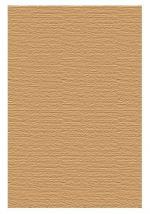|
This section contains 158 words (approx. 1 page at 300 words per page) |
World of Invention on Alexander Parkes
Born on December 29, 1813 in Birmingham, England, Parkes began his career as an apprentice in the art metal trade and then moved on to an electroplating firm, where he silver-plated diverse objects such as spider webs and plants. His work with silver solutions and the chemicals used to produce them--namely phosphorus and carbon disulfide--led him to investigate solutions of rubber and cellulose nitrate. In 1841 he patented a method of waterproofing fabrics by coating them with rubber. He received a second patent in 1843 for an electroplating process.
In 1855 Parkes patented the first plastic. By dissolving cellulose nitrate in alcohol and camphor containing ether, he produced a hard solid which could be molded when heated, which he called Parkesine (later known as celluloid). Unfortunately, Parkes could find no market for the material. John Wesley Hyatt, an American chemist, would rediscover celluloid and market it successfully as a replacement for ivory in the 1860s. Parkes died in London on June 29, 1890.
|
This section contains 158 words (approx. 1 page at 300 words per page) |


